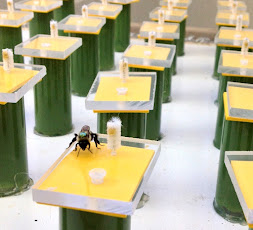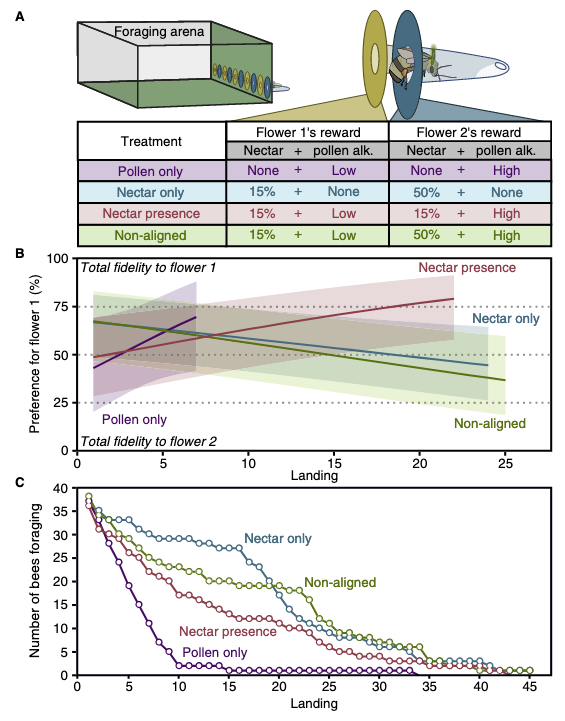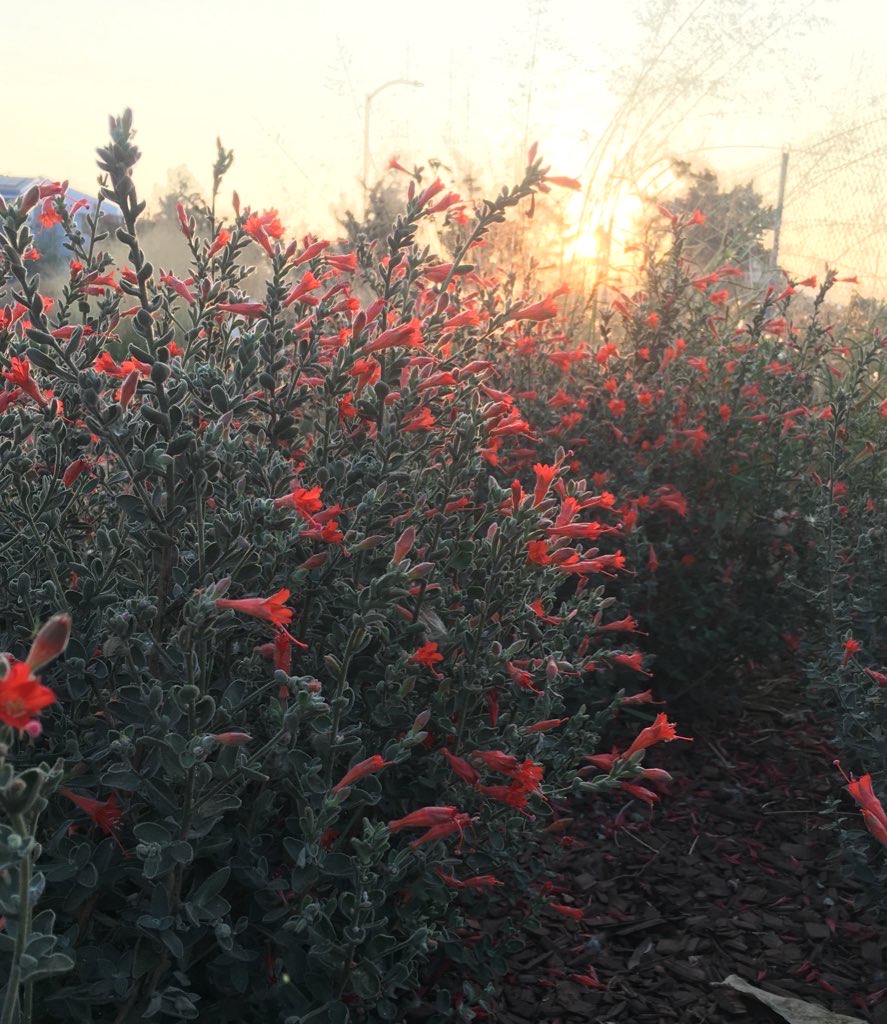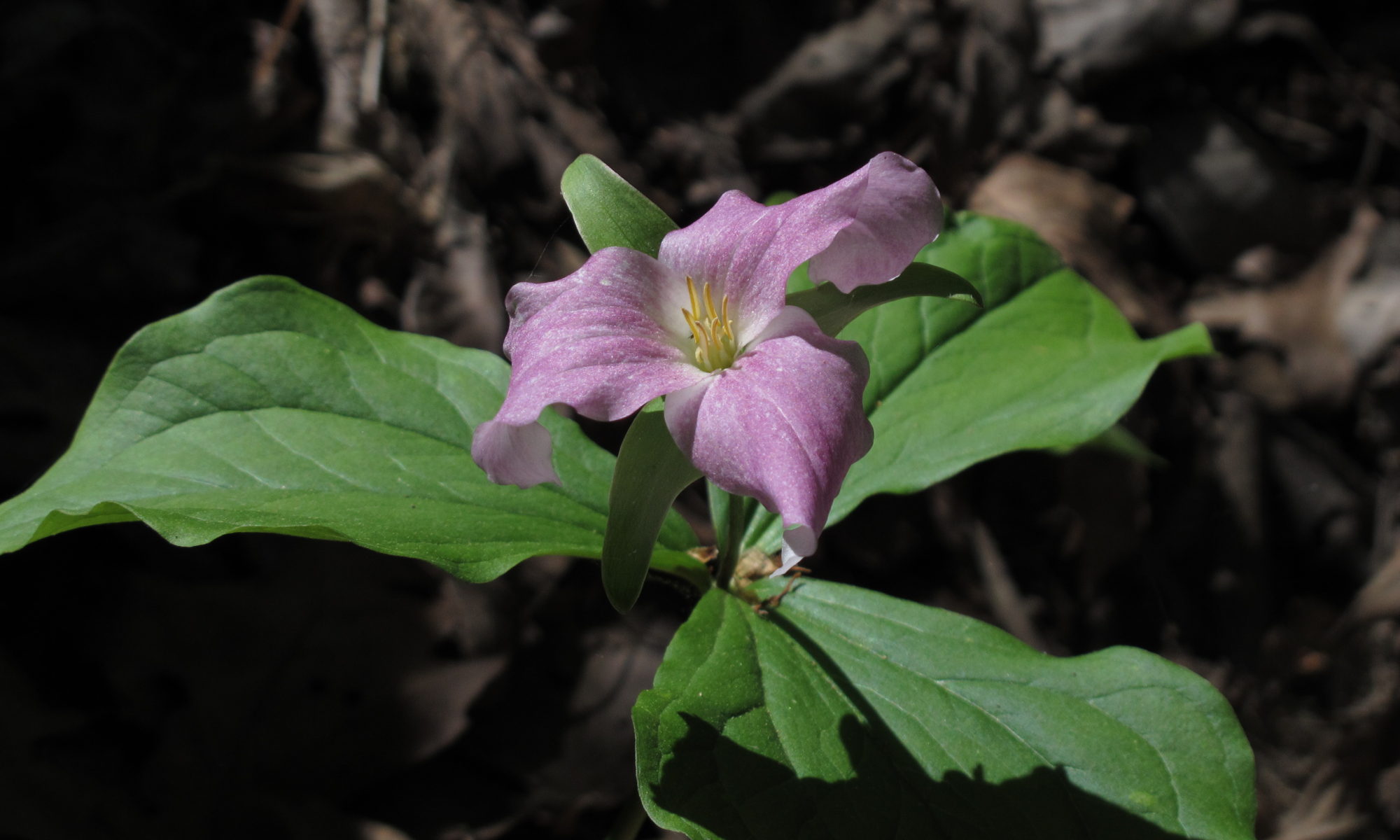Flowers reward animal visitors with pollen and nectar, but these rewards often contain toxic secondary metabolites nutritionally incomplete rewards. What are the functional consequences of this reward chemistry? How does it impact pollinator foraging decisions and plant fitness?

While bees get all of their necessary macronutrients (proteins, lipids, and carbohydrates) from floral rewards these specialized floral tissues are anything but simple. They contain complex suites of primary metabolites and in some cases toxic secondary metabolites. Working with Drs. Anne Leonard and Felicity Muth, we used lab-based behavioral foraging assays to demonstrate that bees sense, taste, and respond to aversive secondary metabolites in pollen. Thermal video evidence (below) suggested this gustatory sensing may happen as bees regurgitate nectar to pack pollen for transport.

In Francis et al 2019, published in Current Biology, we showed that bees foraging on an artificial patch of flowers that offer only chemically defended pollen or undefended pollen by quickly leaving the patch (C, pollen only). But, if those flowers offered nectar bees spent longer foraging in a patch. Additionally, bees developed strong preferences for flowers with high quality nectar and alkaloid- laden pollen, but against flowers with alkaloid-laden pollen but lower quality nectar (B, Non-aligned and Nectar presence respectively). This work shows that plants might manipulate pollinator behavior via reward chemistry, and highlights that pollinators responses to floral chemistry may be non-intuitive.
Currently, I am exploring the functional consequences of nectar chemistry on nectar-inhabiting microbes (yeasts and bacteria) with Dr. Rachel Vannette at the University of California Davis. We have asked how intraspecific variation in nectar sugar content impacts nectar microbial communities in Epilobium canum. We are using modern analytical techniques (UHPLC) combined with culture based microbial methods to ask whether sub-populations of Epilobium host different microbial communities in a common garden, and whether these differences are predicted by nectar chemistry.

Reward Chemistry Publications:
- Francis JS, Acevedo CR, Muth F, Leonard AS. 2019. Nectar quality changes the ecological cost of defended pollen. Current Biology. 29(14). PR679-R680.
- Vaudo AD, Tooker JF, Patch HM, Biddinger DJ, Coccia M, Crone MK, Fiely M, Francis JS, Hines HM, Hodges M, Jackson SW, Michez D, Mu J, Russo L, Safari M, Treanore ED, Vanderplanck M, Yip E, Leonard AS, Grozinger CM. 2020. Pollen protein: lipid ratios may guide broad patterns of bee species floral preferences. Insects. 11(2): 132.
- Muth F, Francis JS, Leonard AS. 2016. Bees use taste to determine which flowers to visit. Biology Letters. 12(7): 20160356
